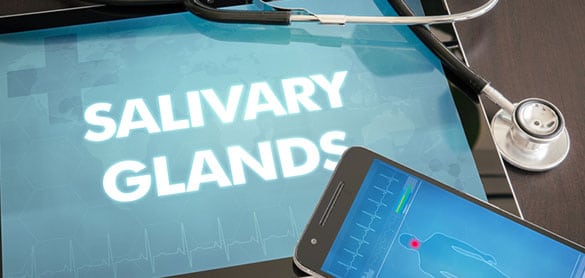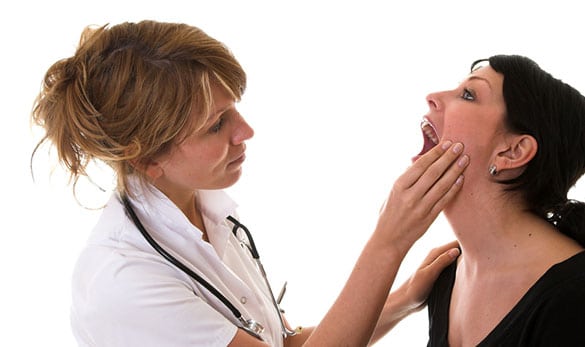
A salivary gland infection can be treated quickly and effectively.
There are three pairs of major salivary glands in the body. The parotid glands are located in each cheek, the submandibular glands are located under the lower jaw, and the sublingual glands are located on the floor of the mouth.
- These glands bring saliva into the mouth, which helps with food digestion and oral health.
- Because it’s so easy for bacteria or viruses to enter the mouth, though, the salivary glands sometimes become infected.
Causes
A salivary gland infection occurs when a virus or bacteria enters the gland. One of the most common causes of an infection is reduced saliva flow, which sometimes results from a blockage in the salivary duct. Saliva washes away food particles and bacteria in your mouth, so reduced saliva flow can cause bacteria to build up in the mouth. The more bacteria there is, the greater your risk of infection.
Sometimes, other viruses or diseases can reduce how much saliva your body produces. These conditions include mumps, influenza, HIV, and sarcoidosis. Not drinking enough water or poor oral hygiene can also cause bacteria to build up in the mouth, potentially resulting in a salivary gland infection.
The most common bacterial infection that affects the salivary glands is streptococcus aureus. Other bacteria that commonly cause infection include streptococcus viridans, haemophilus influenzae, and streptococcus pyogenes.


Symptoms
A strange or bad taste in the mouth is typically the most noticeable symptom of a salivary gland infection. A combination of dry mouth and bacterial build up causes this bad taste.
Pain in the mouth or face is the other most common symptom. You may have trouble fully opening your mouth, or you may feel pain when speaking or chewing. More severe infections can cause swelling in the mouth, jaw, or neck, especially in front of the ears, underneath the jaw, or on the floor of the mouth. The area around the infection may look red and inflamed.
An infection can also cause a high fever, chills, and difficulty breathing. If you experience these symptoms, it’s a sign that the infection is severe and needs immediate treatment. Contact your doctor right away.
Treatment Options
Doctors can diagnose salivary gland infections with a visual exam. If the infection is severe or recurring, your doctor might order additional testing to figure out the underlying cause. In many cases, though, salivary gland infections are minor issues and will clear up on their own.
Antibiotics can treat a bacterial infection and fever. If there’s an abscess around the salivary gland, your doctor may use a fine needle to drain it. There are also some home treatments you can try out to get rid of the infection. Drinking plenty of water will help your body produce saliva and rinse out bacteria in your mouth. Applying warm compresses will help with pain and swelling, and rinsing out your mouth with salt water will keep the area clean.
It’s rare for a salivary gland infection to need surgery, but chronic infections caused by salivary gland disorders may need surgical treatment. The goal of surgery is usually to remove all or part of the infected salivary gland.


